In My Top 8, various members of Team Autostraddle tell you which writers made us who we are today and invite you to like all the same things we like. Today, Editor-in-Chief Riese shares feelings about Lorrie Moore and Mary Gaitskill and some other people.
What makes a “favorite author”? This was hard to narrow down, but eventually I decided on the following: my top eight authors would be authors who changed who I was as a writer. I also decided to focus exclusively on fiction & non-fiction writers rather than on those who are primarily poets — but if you want to read about my favorite poets, I’ve written extensively in the past about my love for Stephen Dunn, as well as my love for Rilke and Jack Spicer and Raymond Carver. Stephen Dunn is without a doubt one of my favorite writers of all time.
The other hard part was all the authors I love on account of two or three books I’ve read, which doesn’t seem like enough to qualify the author as my favorite — this includes authors who’ve only written one or two books (Miranda July, Colleen Curran, Curtis Sittenfeld) and authors who’ve written so many books that the fact that I’ve only read two or three of their books still leaves me unqualified to declare them a favorite (Amy Bloom, Michael Cunningham, Rick Moody). Eventually I settled on the following eight humans. This was very difficult. I may have incldued nine.
MY TOP 8
Lorrie Moore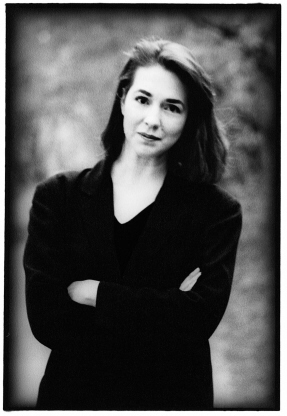
Books Read: Self -Help (1985), Like Life (1990), Birds of America (1998), Anagrams (1986), Who Will Run The Frog Hospital? (1994), about half of A Gate At The Stairs (2009)
Books Yet To Read: the rest of A Gate At the Stairs
Favorite: Birds of America (1994)
We read Lorrie Moore’s How To Be A Writer — first try to be something, anything else — on my first day of workshop in 1998. The writing teachers at Interlochen approached us from a strange in-between place representing two warring desires: they wanted to foster our talents but also to ensure our career expectations remained low.
First try to be something, anything else.
But in confidence a teacher told me I should definitely try to be a writer and also that I should read more Lorrie Moore. I didn’t do anything about either of those ideas for a while.
First, try to be something, anything, else. A movie star/astronaut. A movie star
missionary. A movie star/kindergarten teacher. President of the World. Fail miserably.
Three years later, the most talented and most insufferable member of my upper-level undergraduate fiction workshop asked if I’d read Lorrie Moore and said my writing reminded him of hers. “I get that a lot,” I told him, inaccurately. A few weeks later I left my stupid boyfriend and moved back to campus with friends and bought Lorrie Moore’s Self-Help. There was a story about me and my stupid boyfriend in it, called How, which seemed serendipitous.
Pace around in the kitchen and say that you are unhappy.
But I love you, he will say in his soft, bewildered way, stirring the spaghetti sauce but not you, staring into the pan as if waiting for something, a magic fish, to rise from it and say: That is always enough, why is that not always enough?
Then I was sleeping with a 19-year-old who worked at my gym and was dating a high school swimming star who went out of town a lot for meets. Lorrie Moore wrote a story for us, too, called How To Be An Other Woman.
It is like having a book out from the library.
It is like constantly having a book out from the library.
I finished Self-Help the night the 19-year-old promised he’d break up with the swimmer and I’d accidentally taken a Ritalin instead of an Elavil before bed. I wrote a story called How to Be Normal, about the relationship I’d recently left, because I couldn’t read Lorrie Moore without starting to think like a second-rate Lorrie Moore. My teacher said it reminded him of Lorrie Moore. This time I knew what he was talking about.
My Mom owned Moore’s first novel, Who Will Run The Frog Hospital?, so I snatched that when packing to leave Michigan for New York and read it in July 2004, mostly on the subway, probably. That’s a standalone book, I think, you can read it and like it but not really know Lorrie Moore like you would if you’d read her short stories.
Then I read Self Help again, that August, when I’d just started dating an about-to-get-divorced Republican and couldn’t get a job and when I did get a job, I’d quickly lose that job. My debt mounted. I was outside of things, but paying very close attention.
That had been in Agnes’s mishmash decade, after college. She had lived improvisationally then, getting this job or that, in restaurants or offices, taking a class or two, not thinking too far ahead, negotiating the precariousness and subway flus and scrimping for an occasional manicure or a play. Such a life required much exaggerated self-esteem. It engaged gross quantities of hope and despair and set them wildly side by side, like a Third World country of the heart.
Lorrie Moore’s protagonists are always a little bit outside, always watching, always finding themselves with partners or jobs or homes or lives that don’t fit, wondering why they’ve made such egregiously unwise choices. Their friends are smart and clever, good with puns and wordplay. Like my friends. Humor is relied upon when tragedy strikes, even when nobody else is laughing. Lorrie Moore’s protagonists tell jokes nobody else gets.
The Mother does not know how to be one of these other mothers, with their blond hair and sweatpants and sneakers and determined pleasantness. She does not think that she can be anything similar. She does not feel remotely like them. She knows, for instance, too many people in Greenwich Village. She mail-orders oysters and tiramisu from a shop in SoHo. She is close friends with four actual homosexuals. Where do these women get their sweatpants? She will find out.
In December I read Like Life and loved it so much. Lost without a constant drip of Lorrie Moore, I immediately picked up Birds of America and read it the month I dumped my last boyfriend ever, the Republican, in January of 2005. It was a transformational time. Like Life and Birds of America were fuller than Self-Help, with more characters, and I loved them both and passed them on to similarly impressed friends.
In March of 2005 I read her second novel, Anagrams. I liked all the sentences and words but not the plot/story. It read like a short story writer rebelling against her contractual obligation to write a novel. But it had some of her best lines ever in there. Like when she sleeps with her friend Gerard, which she defines as “spastic and looped, doomed for failure, like two senile inventors in an upstairs room, lonely as spoons,” she explains her desire to be with him (or their desire to be with each other, really):
Life is sad, I thought. Here is someone.
Isn’t that perfect?
In 2008 I read Anagrams again, because Lorrie Moore hadn’t written a new book yet, so what was I supposed to do? I loved it this time. Maybe I was smarter suddenly. When I picked up A Gate At The Stairs last year, it was like returning to an old friend, like returning to my most mish-mashed self. The mystery is all.
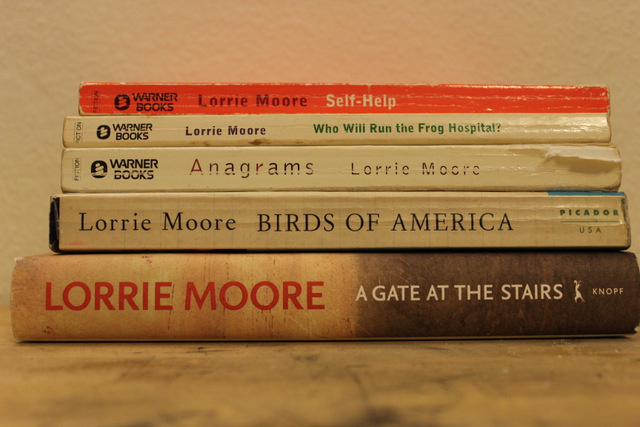
Lorrie Moore taught me how to write my own brain.
Mary Gaitskill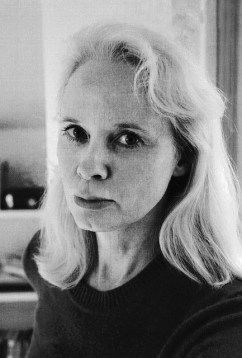
Books Read: Don’t Cry (2009), Veronica (2005), Because They Wanted To (1997), Two Girls Fat & Thin (1991), Bad Behavior (1988)
Books Yet To Read: n/a
Favorite: Bad Behavior (1988)
I was writing a story about sex work for nerve.com and my editor asked if I’d ever read Mary Gaitskill. I had not. He recommended Bad Behavior, her short story book best known for the story “Secretary,” which had recently been made into a movie starring Maggie Gyllenhall. He was just in time: I’d just ran out of Lorrie Moore books to read.
But Gaitskill was dark, like fuck-you-in-an-alley dark, like piss-and-shit dark, like hermetic-office-drones dark. People who’ve given up on happiness but haven’t stopped wanting everything else, especially love or music or desire or revenge.
This was the kind of writer I wanted to be. These were the people I wanted to write about, the feelings I wanted to excavate.
I ate Bad Behavior in a few days and wrote, wrote, wrote. Her novel Veronica, about a model named Allison and New York City and drugs and sex and Allison’s HIV-positive friend Veronica, came out a month or two later and would eventually win lots of awards. I bought it brand-new in hardcover, something I’d never done before. I’ve read it four times since.
I wanted something to happen, but I didn’t know what. I didn’t have the ambition to be an important person or a star. My ambition was to live like music. I didn’t think of it that way, but that’s what I wanted; it seemed like that’s what everybody wanted. I remember people walking around like they were wrapped in an invisible gauze of songs, one running into the next — songs about sex, pain, injustice, love, triumph, each bursting with ideal characters that popped out and fell back as the person walked down the street or rode the bus.
I read Because They Wanted To, another short story collection, next, and loved it, too. Two Girls Fat & Thin was harder to get through, but is by far her most ambitious production and contains, I think, some of her best physical descriptions, of which there are so many I had to just close my eyes and flip to a page to find one for you, because deciding was too hard:
The new school was filled with crowds of strangers with ratted nests of bleached hair, makeup, and breasts. The girls wore pointy boots and stood with their legs apart and their hips thrust out; the boys wore cleats and had faces like knives.
Her characters exist on the peripheries of various sexual subcultures, are plagued by self-destruction, are distracted by the seemingly banal intrusions of ordinary popular culture, are sometimes beautiful and often cruel or damaged. They have complicated and torrid relationships with the regular working world. She speaks explicitly no matter what the vocabulary, she is hard and gross and honest about the deepest most deviant but also earnest and beautiful pits of humanity.
Plus there’s all these other ways she speaks to me: her stories are often set in Ann Arbor, where I grew up, or New York, where I used to live, or San Francisco, where I live now. She’s bisexual and at least a third of her characters are, in some way, queer.
I’ve read everything she’s ever written. When Don’t Cry, another story collection, came out three years ago, I promptly cried — out of joy.

Mary Gaitskill taught me how to write about sex and beauty and ugliness and New York City.
Raymond Carver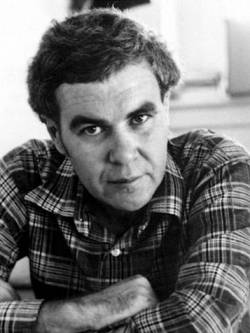
Books Read: Where I’m Calling From (1998) [contains stories from Will You Please Be Quiet Please? (1976), Furious Seasons (1977), What We Talk About When We Talk About Love (1981) and Cathedral (1983)] Where Water Comes Together With Other Water (1985), A New Path To The Waterfall (1989), All Of Us: The Collected Poems (1996)
Books Yet To Read: Elephant (1988)
Favorite: What We Talk About When We Talk About Love (1981)
Raymond Carver is a very famous short story writer, maybe even the best short story writer of the second half of the 20th century. One of them, at least. It’s like he invented this style. Minimalism. Some titles are What We Talk About When We Talk About Love and Will You Please Be Quiet Please? Maybe you read Cathedral in class –Norton loves Cathedral — the one about the blind guy, and tracing?
Raymond Carver was who and what I admired when I first got to Interlochen. I would read a Raymond Carver story and then write my own story. His protagonists were sad and their wives were disappointed. I write too many words all the time but Raymond Carver doesn’t need so many words. I read a biography about his life. He drank a lot and was in love with Tess Gallagher and taught at Iowa and married Maryann.
Raymond Carver was drunk for most of the time. Until the last five years. He had lung cancer. He gave up drinking. He had his “second life,” but he was still brilliant and doomed.

Raymond Carver taught me how to say more things with less words.
A.M. Homes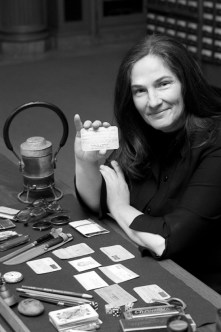
Books Read: Music For Torching (1999), This Book Will Save Your Life (2006), The Safety of Objects (1990), Things You Should Know (2002), The Mistress’s Daughter (2007)
Books I Haven’t Read: Jack (1989), In A Country of Mothers (1993), The End of Alice (1996), May We Be Forgiven (2012)
Favorite: The Safety of Objects (1990)
I came to A.M. Homes backwards: I saw the movie, The Safety Of Objects, and in the summer of 2004 I saw the book at The Strand and so I bought it and wow, it was so good.
Homes deals almost exclusively with the dark side of Suburbia — parents and siblings and lovers and classmates with secrets, thrashing around inside the plastic bag of their lives, yearning for something more but too civilized to get it with anything resembling finesse. I ate Things You Should Know in a day. I didn’t like This Book Will Save Your Life at first but then I loved it. I listened to The Mistress’s Daughter on audiobook, and it wasn’t everything I hoped it’d be but I liked knowing more about her.
A.M. Homes is bisexual, by the way, and wrote some L Word episodes back when the show was still good.
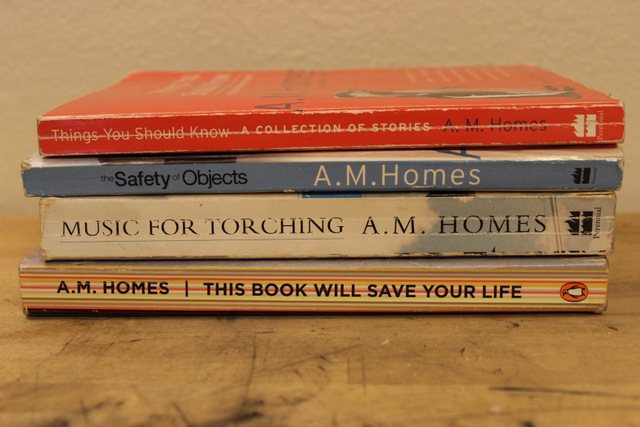
A.M. Homes taught me how to write sympathetically about privileged people.
JONATHAN FRANZEN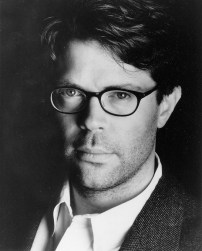
Books Read: The Corrections (2001), How To Be Alone (2002), The Discomfort Zone (2006), Freedom (2010)
Books Yet To Read: Strong Motion (1992), Farther Away (2012)
Favorite: Freedom (2010)
The Corrections came out in paperback in 2002, and it had been lauded as a groundbreaking return to the Modern Novel, a sprawling beast of a book grounded in the Midwest and starring a family with three adult children and also featuring everybody they’d ever known, ever. It was about everything, though.
My boyfriend was going home over winter break and I was staying behind to take care of the dog and figure out how to leave him. I hadn’t been very good at reading since we’d started dating — he didn’t read, not ever, except for school — and between semesters, with him back home and his physical presence and overall negative energy removed from our apartment, I sat down on the couch and opened a novel — The Corrections — and read it and kept on reading it. I just read it and read it and read it and it reminded me why I wanted to write and why I couldn’t be with anybody who wasn’t desperately curious, as I was, about why people do the things they do and why the world is the way it is.
How To Be Alone I read some years later, and loved it too. The Discomfort Zone I was fairly “meh” about, I’m not sure if I read the whole thing or just a little bit. I think I got it on audiobook, which was probably a mistake. Then Freedom came out and was even better than The Corrections. My girlfriend read it after I did and she loved it too. Jonathan Franzen can eliminate all useless words and still have a million words. He can weave a gigantic story. He’s one of those writers you want to read a lot of “How I Write” things about, and copy them.
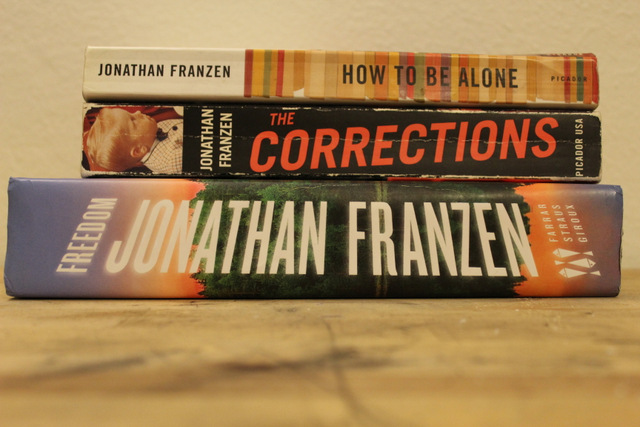
Jonathan Franzen taught me how to write an important novel. One day I’ll do something about that knowledge.
Pam Houston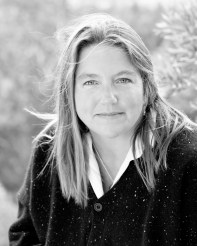
Books Read: Cowboys Are My Weakness (1993), Waltzing The Cat (1999), A Little More About Me (2000)
Books I Haven’t Read: Sight Hound (2006), Contents May Have Shifted (2012)
Favorite: Cowboys Are My Weakness (1993)
In the early ’90s, I think, Pam Houston came to Interlochen to do a reading, and while she was there she went fishing with three of my writing teachers, one of whom would become a kind of surrogate father for me while I was in school there. In “In The Company of Fisherman” she described driving with my teachers and their relationship to the Michigan landscape. She nailed it:
The whole conversation is less like speaking really and more like singing, a song they’ve spent years and years of these cold spring nights together learning, nights anybody anywhere else in the world would call winter, nights filled with an expectation that can only be called boyish and shadowed by too much of the grown-up knowledge that can ultimately defeat men.
Pam Houston is an outdoorswoman. I’m not, really, not at all, but Pam Houston makes me wish I was. The summer after graduating high school I drove up north to visit aforementioned writing teacher and his daughter, Jamie, and at some point I snagged Houston’s famous short story book, Cowboys Are My Weakness, from Jamie’s shelf. I was just gonna flip through it while Jamie was in the shower, but I got sucked in. For two years I’d been studying with those men she wrote about, learning about poetry in a distinctly Michigan way, reading men like Jim Harrison and Gary Snyder talk about the woods, and here was a woman writing about cold-weather camping, big dogs, Alaska, Montana, getting caught in the rapids and cowboys. I proceeded then to another short story book, Waltzing the Cat, and a book of personal essays called A Little More About Me.
I wrote a little essay called “I’d Like To Have a Lover Like Yours” and dedicated it to Pam Houston. It was the first personal essay I ever published.

Pam Houston taught me how to write about the woods.
Joan Didion
Books Read: The Year of Magical Thinking (2006), Play It As It Lays (2005), about half of We Tell Ourselves Stories In Order To Live (2006), which contains her collective work from seven books of non-fiction: The White Album (1979), Slouching Towards Bethlehem (1968), Miami (1987), After Henry (1992), Where I Was From (2003), Political Fictions (2001) and Salvador (1983).
Books I Haven’t Read Yet: Blue Nights (2012), A Book Of Common Prayer (1997), The Last Thing He Wanted (1996) and the rest of We Tell Ourselves Stories In Order To Live (2006).
Favorite: The Year of Magical Thinking (2006)
I don’t know how to talk about Joan Didion. She’s this tiny woman and this great big thing. I started with The Year of Magical Thinking in the beginning of 2006, because it won a lot of awards and I’d liked the article about it I read in New York Magazine. It said all the things about grief, and death when it comes suddenly. She said all the words I wish I knew how to say. I love the essay Goodbye To All That, of course, it’s possibly my favorite essay of all time. Since then I’ve just been reading all her essays.
I’m not sure how I felt about Play It As It Lays, the only novel of hers I’ve read, but I want to read all the true things she’ll ever read, and so luckily I have a big book enabling me to do that. There’s so much that I can do this for the rest of my life, I think. There will always be more Joan Didion to read.
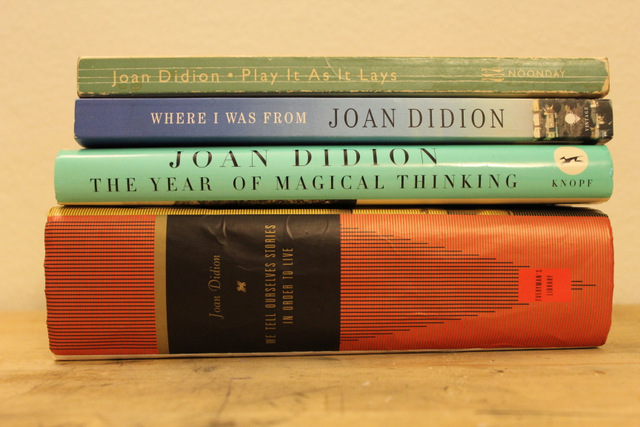
Joan Didion taught me how to write about myself and the whole world at the same time, and also about place.
Dorothy Allison
Books Read: Trash: Short Stories (1988), Bastard Out of Carolina (1992), Two Or Three Things I Know For Sure (1995)
Books I Haven’t Read: Skin: Talking About Sex, Class and Literature (1994), The Women Who Hate Me: Poems By Dorothy Allison (1983) and Cavedweller (1998)
Favorite: Two Or Three Things I Know For Sure (1995)
The first Dorothy Allison anything that I read was “River of Names” — we read it in class in high school — and it read like an actual river, like you’re just flowing from one idea to the next, past each quick tragic death of a cousin, in and out of the bed she shared with her new lover. The next time I found Dorothy Allison was eight years later when my then-roommate said Bastard Out of Carolina was her favorite book and I figured it was high time I check it out. Everybody should, it’s that good. Trash came next and was awesome. But I’ve never loved anything quite like I love Two Or Three Things I Know For Sure, one of the finest little books I’ve ever read ten times.
“I know the use of fiction in a world of hard truth, the way fiction can be a harder piece of truth. The story of what happened, or what did not happen but should have — that story can become a curtain drawn shut, a piece of insulation, a disguise, a razor, a tool that changes every time it us used and sometimes becomes something other than we intended. The story becomes the thing needed.”
If you get into lesbian feminist etc anthologies, you”ll come to appreciate Allison also for her generosity as an anthologist. I’ve read stories & essays like “Private Rituals” in Too Darn Hot: Writing About Sex Since Kinsey,””Conceptual Lesbianism” in Surface Tension: Love, Sex & Politics Between Lesbians & Straight Women (1996), an interview in Happy Endings: Lesbian Writers Talk About Their Lives And Work (1993), “Her Body, Mine and His” in Pomosexuals: Challenging Assumptions About Gender & Sexuality (1997), “A Question of Class” in Sisters, Sexperts & Queers (1993) and “Her Thighs” in The Persistent Desire: A Femme-Butch Reader (1991). That’s a lot!

Dorothy Allison taught me how to write about the truth.
Eileen Myles
Books Read: Cool For You (2000), Sorry, Tree (2007), Not Me (1991), The New Fuck You (1995), Inferno (2010)
Books I Haven’t Read: Chelsea Girls (1994), Maxfield Parish: Early and New Poems (1995), School of Fish (1996), The Importance Of Being Iceland (2009), Snowflake/different streets (2012)
My then-girlfriend was pretty surprised when, halfway through “Lost In Canada: A 3,600 Word Advertisement For My Missing Notebook” in The Believer, I texted to ask if she’d ever heard of Eileen Myles. Why hadn’t I heard of Eileen Myles? She wanted to know. Sometimes the most important people fall through the cracks, I guess.
Along with other Myles fanatics, I’ve said so much about her on this website (and elsewhere) that I’ll just have to keep this one brief but you know, wow. Eileen Myles. I finally saw her in person a month or six ago at the library in San Francisco. She was reading in a room in the basement that had really terrible fluorescent lighting. Michelle Tea hosted. There she was, Eileen Myles! My girlfriend asked if I wanted to go get a book signed, or whatever, but of course not. I’d be too nervous.
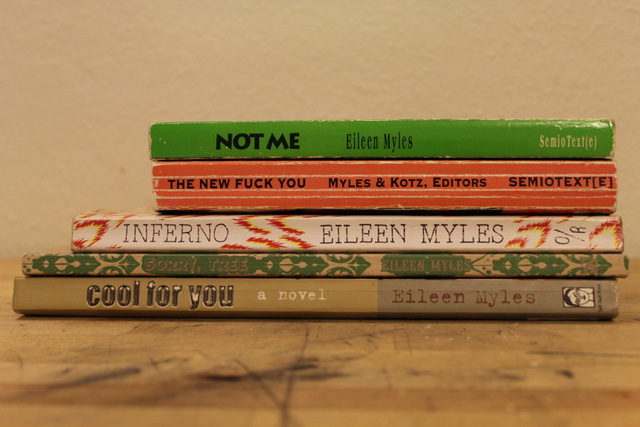
Eileen Myles taught me how to write like I think, and to own it.
…it seems to me that life is just a series of long, jagged peaks of joy — accompanied by a brooding and enduring sense of a loss — of powers, of love, of favorite shirts, of moments and opportunities and notebooks that together constitute the passage of one human, me, bobbing floating skipping like a flat stone down the river of life. It’s massive, this sense of things; it’s anonymous yet it feels personal from “here.”
– Eileen Myles, “Lost in Canada: a 3,600 Word Advertisement For My Missing Notebook.”






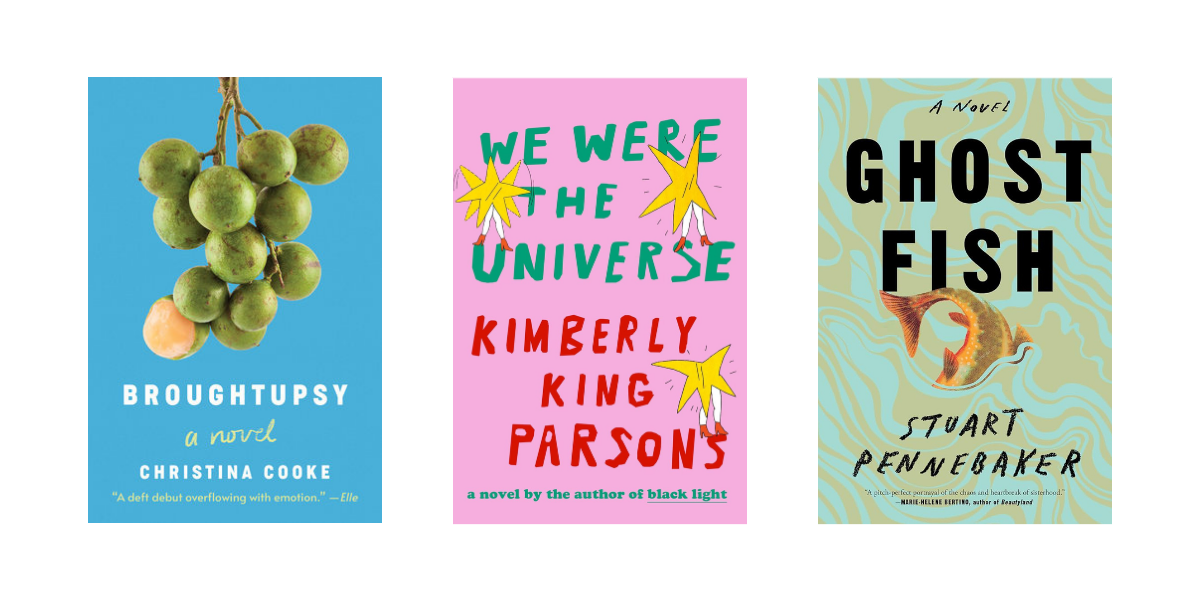

Comments
My Amazon wish list just got a whole lot longer.
AMAZING. i bookmarked this page immediately. thank you so much Riese!
I can’t wait to dig in to one of these!
This post brings out the main reason that literature is my life support: namely, that it doesn’t make me feel happy or even better, but that it helps me feel less alone in this world.
yes!
I have to admit that my love for reading has recently started, I’m still trying to figure out what genre is really “my thing”, so these posts are really helpful.
And then, yes, I also have this weird obsession for other’s obsessions (or favourites) so thanks! :)
Thank you so much for this!
Welp, here’s my winter reading list. Thanks Riese!
Oh how pleased I was to find Dorothy Allison on this list! But Riese, Darlin’, do read Skin. It’s early woman’s movement, coming-of-age goodness, unique insight into classism, but- most importantly- hot, down and dirty lesbian sex, girl!
But I agree that Two or Three Things is her absolute best work. That book overwhelms with its power and beauty.
yes i want to read skin i will read skin!
Moore, Homes, Carver… Your list reminds me of every writing professor I’ve ever had lol A few of those books are on my forgotten reading list, so I’m glad to have been reminded of them!
I suddenly realise that my familiarity with all of these writers is down to them having been mentioned at some time or another on This Girl Called Automatic Win or Autostraddle.
p.s. Veronica changed my life as a human and writer
yeah! as i was writing this i was like, “this will be old news to autowin readers”
Such nostalgia though. I wanna wrap myself in Autowin memories and spend all day reading the gems that you exposed so many of us to
How do you feel about Amy Hempel? She is my absolute favorite, and is inspired by/has inspired/has a style similar to some of the writers on your list.
you know what’s confusing? amy bloom, amy hempel and aimee bender. so many quirky female short-story writing amys! anyhow, i swear to g-d i’ve read at the gates of the animal kingdom but cannot for my life remember it. i will add collected stories to my to read list!
I would be really surprised if you didn’t love her story “The Uninvited.” It is killer, and maybe my favorite thing that exists.
Oh my god, all of these writer posts are coming so quickly I don’t even know what to start reading first! I just wanna roll around in all of these awesomely written recommendations.
great list, riese! i like this top-8 series!
i’ve now read all the books from the short story post* (except the one by the guy) and enjoyed all of them. especially a.m. homes and amy bloom.
also, ali smith. i love her experimental style. i just finished free love and other stories,
recommend it if you haven’t read it yet, it’s definitely queerer than her other story collections, or at least more explicitly so.
i started reading lorrie moore because you mentioned her somewhere. i like her words a lot, quite melancholy though.
also, jonathan franzen’s essays are so good. i think about the one about the US postal service basically every time i go to the post office.
so yeah, i really like your taste in books/writers, is what i’m saying. now that i think about it, a considerable amount of the books i’ve read this year came recommended by you/autostraddle. basically, i’ll read anything you recommend by now. guess i’ll be updating my amazon wish list!
* http://develop.autostraddle.com/queerish-short-story-books-127345/
i LOVED the one about the postal service. i remember i was talking to my ex about this essay about the postal service i’d read that was really fascinating that he would probably also like (i don’t know why i thought he would also like it though, what happened next seems to have blurred that memory), and he suddenly got very defensive because his uncle was a postal worker in chicago. all i’d done really is tell him the topic and some of the most surprising elements of it, and he was legit mad in a way he’d never been with me before. it was so strange. anyhow, where was i
i read “the whole story and other stories” by ali smith, carly loved it and lent it to me and I kept it. i wasn’t super into it? but will give her another try.
i’m glad you liked the books from the short story post! i LOVE that book of amy bloom’s so much. i remember reading it all in one day on the day i wrote that post.
ALSO, i like the pictures of your books
i too like the pictures of your books! i love looking at everyone’s bookshelves.
super have to look into reading the rest of mary gaitskill’s books, her descriptions really are the best ever. it’s like she knows me and therefore i trust that everything else she writes is true.
these are my fave: ‘Dr Fangelli had very large forearms… his hands seemed weirdly placed on his wrists, and his unevenly spaced fingers suggested undue activity in impossibly varied directions… His face zoomed at her, and she had the disturbing thought that its happy, porous proximity could unhinge her jaw with the projected, exuberant desire that she open wide… He swiveled violently away.’
and
‘”he kept heaving back, sort of panting with exertion, and he’d say, in that voice of inhuman dentist calm, ‘just a little more…’”‘
i mean that is my life.
in ‘two girls fat and thin’ i literally underlined every single physical description because they were so good i wanted to be able to access them at a moment’s notice
i want to look at everybody’s bookshelves toooo
can this be a new tumblr we all share
ask and ye shall receive (and i shall procrastinate)
shelfconfidence.tumblr.com
There are soso many short story collections here and that is my favorite thing. I’ve found that the short attention span I’d accidentally adopted in college means that short stories are sometimes they only things I can read, so this is exciting. How I’ve never read any A.M. Homes or Mary Gaitskill, I have no idea.
This is excellent! I’m at the library right now (and referring to this so I know what to check out). I think there’s an omission in the Joan Didion section: Run, River, the first Didion novel I ever read and one of my favorites.
yes! i actually finished ‘where i was from’ today and a section of it talks about “Run, River” in relationship to the book’s larger themes a lot (I love how freely joan didion references her own work, i want to feel that important one day) so now I’m curious and have to check it out
Love this list! Bookmarked for that date in the future when I have more time to read :)
BTW have you seen this? http://www.newyorker.com/online/2007/12/24/071224on_onlineonly_carver Showing what Carver’s longtime editor and friend, Gordon Lish, did to his work. Seems his pared back style would not have been so pared back without help.
cheers,
k.
yes i have! i read it at the time it came out, there was a lot of hullabaloo around it and i was anticipating it with fervor. really interesting stuff, and a big revelation to me.
Wow. Just reminded me of the day when I used to be a geeky literature student. I shall definitely read Two Or Three Things I know For Sure.
Ah! Joan Dids! She is so good. I am going to have to agree with Gemma and suggest “Run River.” “A Book of Common Prayer” is also worth a look. She is such a fantastic essayist, but her fiction will also rock your world.
And Dorothy Allison. So good!
Riese this amazing and very helpful to me!
“Sight Hound” was so great- about a Buddhist wolfhound. Now I think all wolfhounds, and maybe all sighthounds (except whippets, they’re batshit crazy) are Buddhists…
YES HELLO i’m commenting on a five year old post because i loved this so much and i’m checking out everyone on this list and it’d be awesome if the staff members that have joined since this article was written did something like this
i don’t even know if anyone will see this but WOW GOSH i loved this a lot.